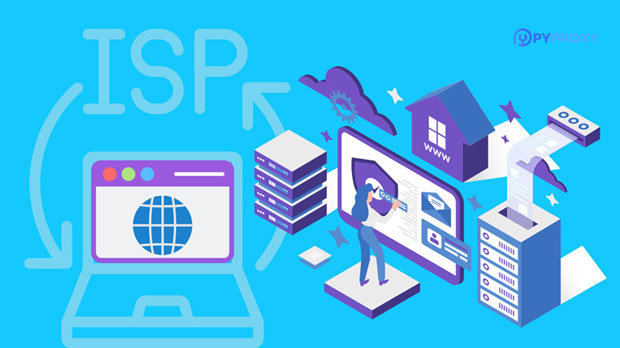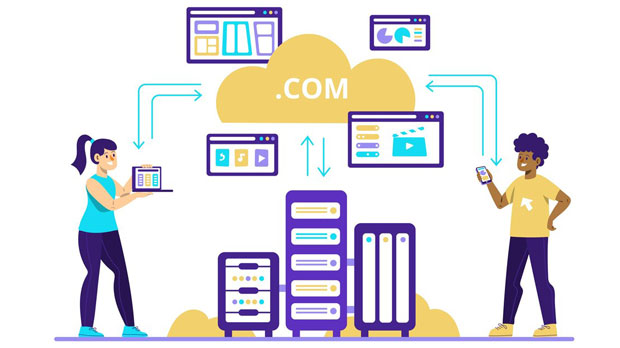When it comes to proxy services, businesses and individuals often face the dilemma of choosing between PlainProxies and data center proxies. While both offer specific advantages, PlainProxies stand out due to their unique features. PlainProxies, typically coming from residential IPs, provide an authentic and undetectable experience compared to data center proxies, which are often flagged by websites due to their predictable nature. This article will explore the key advantages of PlainProxies over data center proxies in depth, emphasizing why they offer better reliability, security, and performance. Understanding PlainProxies and Data Center ProxiesBefore diving into the benefits, it is essential to understand what PlainProxies and data center proxies are. A data center proxy is a proxy that routes your internet connection through a server located in a data center, using an IP address that originates from a server instead of a residential or mobile device. These proxies are highly scalable and inexpensive, making them ideal for certain use cases like web scraping and bulk tasks.On the other hand, PlainProxies are residential proxies that use IPs from real users, often sourced from internet service providers (ISPs). These proxies provide a much more legitimate browsing experience, making them harder to detect as proxies.1. Enhanced Privacy and AnonymityPlainProxies offer a higher level of privacy and anonymity compared to data center proxies. The primary reason for this lies in the fact that residential proxies are connected to actual homes, making them appear like normal user connections. Data center proxies, however, are often flagged because their IP addresses are known to be from data centers, which many websites recognize as suspicious or fraudulent activity.This enhanced privacy is especially beneficial for users engaged in sensitive tasks like managing multiple social media accounts, accessing geo-blocked content, or browsing without revealing their identity. With PlainProxies, the chances of being blocked or detected are significantly lower, as websites do not distinguish between a residential IP and a regular user.2. Reduced Risk of IP Blocks and BansOne of the major advantages of PlainProxies over data center proxies is the reduced risk of IP bans or blocks. Data center proxies often experience high rates of detection because they come from a limited range of IPs associated with specific data centers. Websites frequently blacklist these IPs due to their high usage volume, making it difficult for users to access certain websites consistently.PlainProxies, however, are sourced from a large pool of residential IP addresses, which makes it harder for websites to track and block them. Since residential IPs are used by everyday internet users, they are less likely to be flagged. This advantage is crucial for businesses and individuals who rely on stable, uninterrupted access to websites for tasks like web scraping, data collection, or managing large-scale digital campaigns.3. Better Geographical TargetingPlainProxies provide better geographical targeting than data center proxies. When using a data center proxy, the IPs are often located in a specific data center region, which may not align with the user's targeted location. For example, if a user needs to appear as if they are browsing from the United States but are using a data center proxy from Eastern Europe, the chances of being detected or blocked increase.With PlainProxies, users can select residential IPs from a wide range of geographic locations, making it easier to mimic real users from any part of the world. This flexibility allows businesses to test their services in various regions or access region-specific content and services without the risk of being flagged.4. Greater Reliability and StabilityWhen comparing the stability and reliability of PlainProxies and data center proxies, the former often has the edge. Data center proxies may experience downtime or slowdowns, especially when the server hosting the proxy is overloaded or under heavy usage. Residential IPs, on the other hand, are more reliable since they are tied to real users and not dependent on a single server's infrastructure.Moreover, residential proxies have fewer issues related to bandwidth and speed throttling, as they typically offer more consistent connections. For businesses that rely on proxies for large-scale operations, such as e-commerce, ad verification, or SEO monitoring, stability is a crucial factor. PlainProxies provide a more stable and reliable connection that minimizes interruptions.5. Cost-Effectiveness for Long-Term UseWhile data center proxies may appear to be more cost-effective upfront, PlainProxies provide greater value in the long term, especially for businesses that require continuous access to the internet without interruptions. The cost of a data center proxy can add up quickly when considering the need for rotating IPs and the risk of IP bans.PlainProxies, despite being more expensive on a per-IP basis, often result in fewer operational hurdles like IP blocks and bans, which reduces the need for frequent proxy replacements. In the long run, businesses can save money by using PlainProxies, as they reduce the need for constant proxy management and maintenance.6. Improved Security for Sensitive TasksSecurity is another important factor where PlainProxies excel. Data center proxies are more vulnerable to being tracked and detected because they have a limited range of IP addresses, and websites often monitor these IPs for unusual activity. PlainProxies, however, are less likely to be flagged due to their distributed nature and ties to real users.For tasks that require high security, such as managing sensitive financial transactions, personal data scraping, or protecting against online surveillance, PlainProxies provide a more secure environment. By using residential proxies, users can minimize the risks of data breaches and maintain a higher level of privacy.ConclusionIn conclusion, while both PlainProxies and data center proxies have their merits, PlainProxies stand out due to their enhanced privacy, reduced risk of IP bans, better geographical targeting, and greater reliability. Their cost-effectiveness in the long run, coupled with improved security, makes them a more suitable choice for businesses and individuals who rely on proxies for sensitive or high-stakes tasks. Whether it's accessing geo-restricted content, conducting large-scale web scraping, or maintaining anonymity online, PlainProxies offer a more robust and dependable solution than their data center counterparts.
Jul 14, 2025


































































